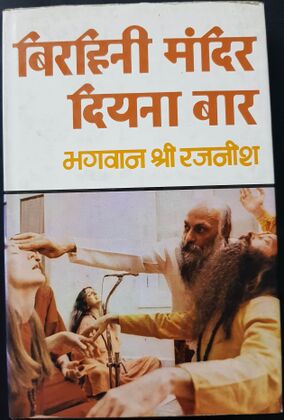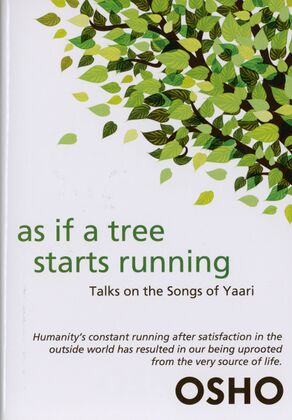Notes on the Indian poet-mystics: Difference between revisions
(→Yaari) |
No edit summary |
||
| Line 16: | Line 16: | ||
It has been hand-copied since Gareeb put it together, but more recently has actually been (mostly) published. It contains a lot of Gareeb's (poor quality) original poetry but its main attraction is the many verses of Kabir that it contains. In that regard, Gareeb is not so much an author as the compiler. He lived from 1717 to 1782, centuries after Kabir, so cannot be thought of as a Kabir disciple in the ordinary sense, but he thought of himself as a direct disciple, so this is how the idea has arisen. | It has been hand-copied since Gareeb put it together, but more recently has actually been (mostly) published. It contains a lot of Gareeb's (poor quality) original poetry but its main attraction is the many verses of Kabir that it contains. In that regard, Gareeb is not so much an author as the compiler. He lived from 1717 to 1782, centuries after Kabir, so cannot be thought of as a Kabir disciple in the ordinary sense, but he thought of himself as a direct disciple, so this is how the idea has arisen. | ||
For more on Gareeb, see also Gupta's book, image right. | For more on Gareeb, see also Gupta's book, image right. | ||
==Sahajo== | |||
[[image:Sahajobai.jpg|right|240px]] | |||
Very little info is to be found on the net about Sahajo(bai). What we have here derives entirely from [https://superaalifragilistic.wordpress.com/2012/07/06/the-unforgettable-song-of-sahajo/ the blog of a former sannyasin]: | |||
Sahajo was born into a traditional Rajasthani family in 1725. As was the custom in those days, her marriage was arranged at the age of 11. A notable spiritual teacher, Charandas, who was her cousin, met her a few hours before the celebrations began. As beautiful little Sahajo was being meticulously dressed up in her bridal finery, Charandas said to her with a smile: | |||
Oh Sahajo! Why beautify your face for mere married bliss?<br> | |||
When one must die, you cannot say.<br> | |||
But we all must go, of that you can be sure<br> | |||
Would you trade your head for such a fickle conjugal bliss? | |||
It is said that upon hearing these words, the not-yet-teenaged Sahajo had an epiphany: she took off all her wedding jewelry and announced to her family that she would seek the Divine for the rest of her days. | |||
Some historians take the story a step further: they say that as the bridegroom’s party approached, the groom’s horse was startled by a fire-cracker, tripped over a branch and fell. The groom died instantaneously. Impressed by what he considered to be Charandas omniscience, Sahajo’s father blessed his daughter’s wish. | |||
From that day on, Sahajo became devoted to her teacher. She practised yoga and meditated on chakras like his other disciples and attained self-realization. It was a time when in many parts of the world, women were still being burned for challenging religious paradigms. But Sahajo stood her ground even when she was mocked – even standing alone against society, she did not lose her femininity. And when she did write about love, it was about a love like no other. See [[{{TALKPAGENAME}}|discussion]] for a pretty wild sample of her love poetry. | |||
==Tulsidas == | ==Tulsidas == | ||
Revision as of 20:26, 8 July 2022
This page  is under construction
is under construction
This page has overflowed from Belvedere Printing Works (source doc), a list of Belvedere's books on Hindi religious poetry which appear to have been the source material for many of the Indian poet-mystics Osho speaks on in many Hindi series. This page will provide more information about who they were.
A good source of info on these guys and the Indian phenomenon in general is FE Keay's Kabir and His Followers, a full-text version of which is available on Archive.org. And each of Belvedere's books has at least some biographical info on their subjects. Some of these books are also available on Archive.org. Much of the info below comes from Komori Kentarou, a wiki correspondent.
The various poet-mystics below are listed in alphabetical order ... please be patient ...
Gareebdas
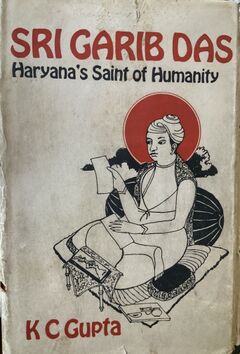
(also rendered as Garib das, etc). Osho has not commented on him directly at all, but he has included a book now known to have been authored by him in Books I Have Loved, "The Grantha", sometimes called "Guru Granth(a) Sahib", the same name as the holy book of the Sikhs, but not to be confused with that book. Osho also includes the Sikh book in BIHL, ch 7. This one is from ch 12. He says:
- Sixth: I have always loved a book whose author is unknown; he is anonymous, although it is known to have been written by a disciple of Kabir. It does not matter who wrote it, but whoever did so must have been enlightened; that much can be said without any hesitation.
- It is a small book of poems, very poorly written. Maybe the man was not very educated, but that too does not matter. What matters is the matter in it. Yes, the matter matters -- the content. The book is not even published.
It has been hand-copied since Gareeb put it together, but more recently has actually been (mostly) published. It contains a lot of Gareeb's (poor quality) original poetry but its main attraction is the many verses of Kabir that it contains. In that regard, Gareeb is not so much an author as the compiler. He lived from 1717 to 1782, centuries after Kabir, so cannot be thought of as a Kabir disciple in the ordinary sense, but he thought of himself as a direct disciple, so this is how the idea has arisen.
For more on Gareeb, see also Gupta's book, image right.
Sahajo
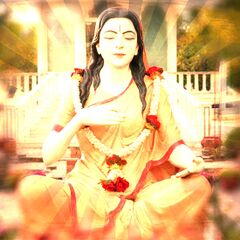
Very little info is to be found on the net about Sahajo(bai). What we have here derives entirely from the blog of a former sannyasin:
Sahajo was born into a traditional Rajasthani family in 1725. As was the custom in those days, her marriage was arranged at the age of 11. A notable spiritual teacher, Charandas, who was her cousin, met her a few hours before the celebrations began. As beautiful little Sahajo was being meticulously dressed up in her bridal finery, Charandas said to her with a smile:
Oh Sahajo! Why beautify your face for mere married bliss?
When one must die, you cannot say.
But we all must go, of that you can be sure
Would you trade your head for such a fickle conjugal bliss?
It is said that upon hearing these words, the not-yet-teenaged Sahajo had an epiphany: she took off all her wedding jewelry and announced to her family that she would seek the Divine for the rest of her days.
Some historians take the story a step further: they say that as the bridegroom’s party approached, the groom’s horse was startled by a fire-cracker, tripped over a branch and fell. The groom died instantaneously. Impressed by what he considered to be Charandas omniscience, Sahajo’s father blessed his daughter’s wish.
From that day on, Sahajo became devoted to her teacher. She practised yoga and meditated on chakras like his other disciples and attained self-realization. It was a time when in many parts of the world, women were still being burned for challenging religious paradigms. But Sahajo stood her ground even when she was mocked – even standing alone against society, she did not lose her femininity. And when she did write about love, it was about a love like no other. See discussion for a pretty wild sample of her love poetry.
Tulsidas
(also rendered as Tulsi Sahab, etc). Tulsidas is among the best-known and widely published of all of Belvedere's mystic-poets, with no less than five of their books dedicated to him. Osho has mentioned him many times in Hindi and English discourses, but always in a disparaging way. Whatever the quality of his poetry, he was too much of a Hindu traditionalist, too orthodox, for Osho to find any merit in commenting on his poetry.
Yaari
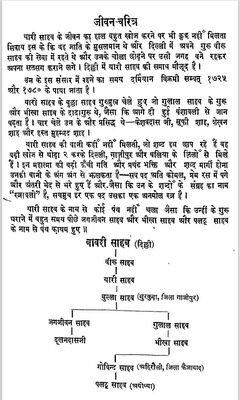
(also rendered as Yaari Sahab, Yari, etc). For all Yaari's importance in this tradition, his literary output appears to have been quite limited, compared to the thousands of verses of Kabir, Gulal and others. At least, little has been found, but these few verses are considered masterpieces, and he has an important part in the lineage of these guys ....
Sw Anand Haridas' review in Osho News of As If a Tree Starts Running, an English translation of Birahini Mandir Diyana Baar (बिरहिनी मंदिर दियना बार), has Yaari as a Muslim living in Delhi ~1668 to ~1763, a very long life for those days. Belvedere's small bio (image right) agrees with Haridas except on the dates, having him instead living from ~1725 to ~1780. FE Keay has him from 1668 to 1723, which dates balance the discrepancies nicely and so shall be adopted. See discussion for how that and other stuff on Yaari gets sorted out.
Yaari's guru was Biru Sahib, a Hindu, and Biru's was Bawri Sahib, another Delhi Muslim. Haridas adds an unusual twist to that, presenting Bawri as Bawari Sahiba, a Muslim woman! Yaari was also important for who came after him, his disciples and so on down the line. Belvedere presents a chart on Yaari's bio page that makes him the guru of Bulla Sahib, with Gulal, Jagjivan, Doolandas, Bhika, Paltu and others downstream. Bulla Sahib, sometimes rendered as Bulle Sahib, appears not to have been the same as Bulleh Shah, who was sort of contemporary but stayed largely around Lahore and had a different guru or Murshid.
Some 22 of Yaari's verses are presented as transliterated text in Bhajan Sagar, a blog.
Osho on Yaari, Hindi first edition, 1979
first English translation, 2019
